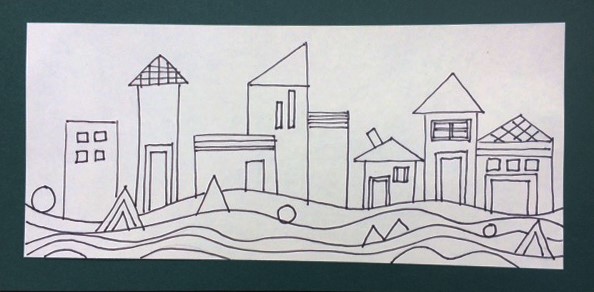Studio Cascadia
Elements of Art: Shape
Closed lines with height and width create a shape. A shape is two-dimensional and includes geometrical and organic shapes.
Geometric vs Organic
Geometric shapes have clear edges and boundaries and are defined by mathematic terms. They include triangles, squares, rectangles, circles, polygons, etc.
Organic shapes do not have clear edges and boundaries and are free form. They do not have exact angles and measurements, and they are shapes found in nature.
Shape in Art at Cascadia
Elizabeth Warhanik (1880-1968)
Composition, circa 1925
White line color woodcut
Private Collection
Elizabeth Warhanik was an early prominent artist in Seattle who focused on landscape and still life. Born in Philadelphia, she later taught in Japan before moving to Seattle. In this piece, Warhanik uses a mixture of organic and geometric shapes. Look carefully at the yellow and red pattern to find triangles and rectangles. Do you see any other geometric shapes?


Art Project: Exploring Shape in My Neighborhood
Shape can either be geometric and angular or curvy and organic. Either way shape emphasizes the flat two-dimensional property of elements in art.

